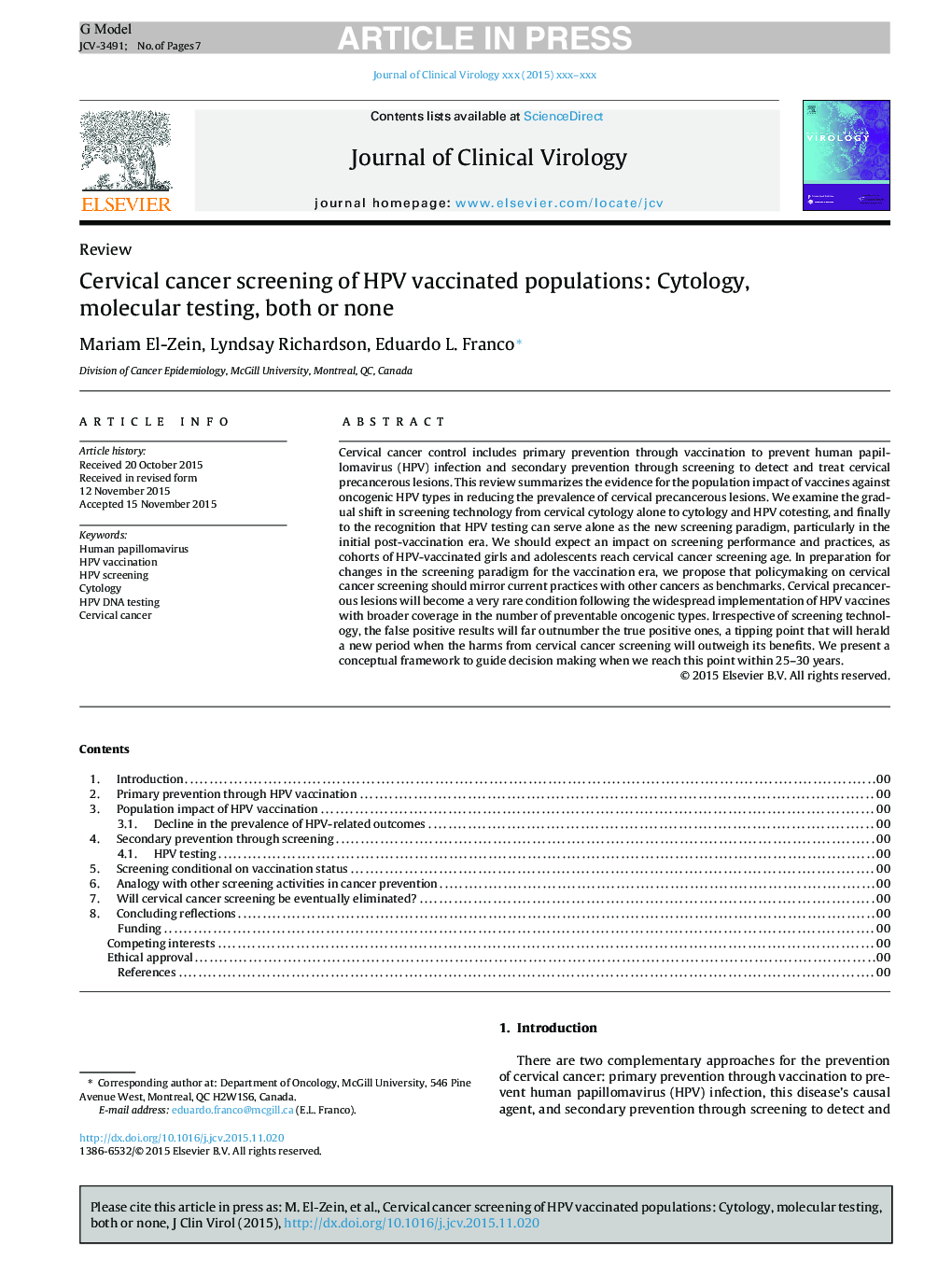| Article ID | Journal | Published Year | Pages | File Type |
|---|---|---|---|---|
| 6119704 | Journal of Clinical Virology | 2016 | 7 Pages |
Abstract
Cervical cancer control includes primary prevention through vaccination to prevent human papillomavirus (HPV) infection and secondary prevention through screening to detect and treat cervical precancerous lesions. This review summarizes the evidence for the population impact of vaccines against oncogenic HPV types in reducing the prevalence of cervical precancerous lesions. We examine the gradual shift in screening technology from cervical cytology alone to cytology and HPV cotesting, and finally to the recognition that HPV testing can serve alone as the new screening paradigm, particularly in the initial post-vaccination era. We should expect an impact on screening performance and practices, as cohorts of HPV-vaccinated girls and adolescents reach cervical cancer screening age. In preparation for changes in the screening paradigm for the vaccination era, we propose that policymaking on cervical cancer screening should mirror current practices with other cancers as benchmarks. Cervical precancerous lesions will become a very rare condition following the widespread implementation of HPV vaccines with broader coverage in the number of preventable oncogenic types. Irrespective of screening technology, the false positive results will far outnumber the true positive ones, a tipping point that will herald a new period when the harms from cervical cancer screening will outweigh its benefits. We present a conceptual framework to guide decision making when we reach this point within 25-30 years.
Related Topics
Life Sciences
Immunology and Microbiology
Applied Microbiology and Biotechnology
Authors
Mariam El-Zein, Lyndsay Richardson, Eduardo L. Franco,
